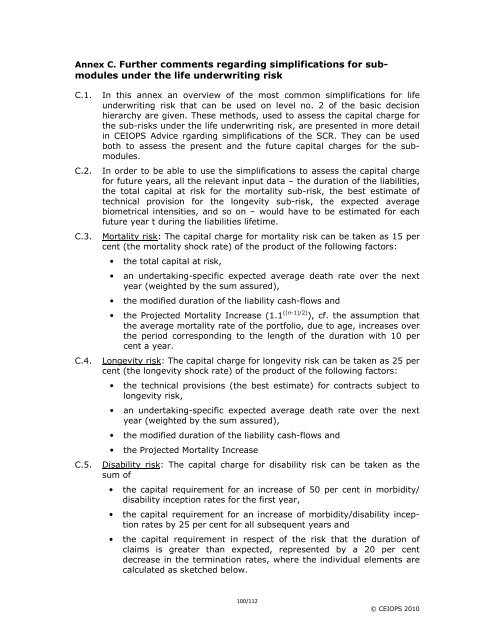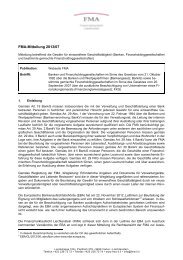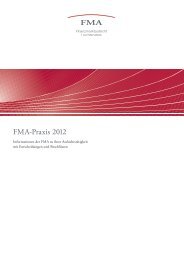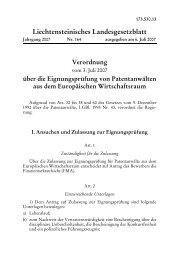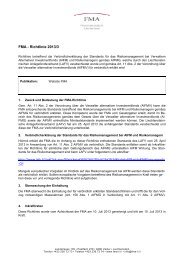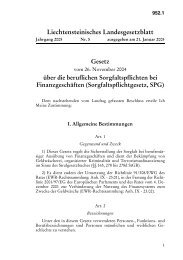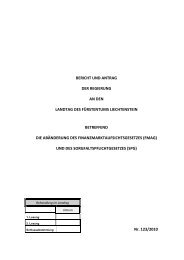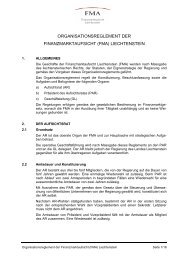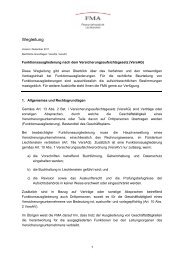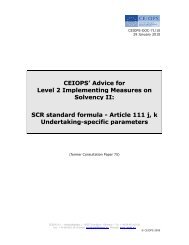CEIOPS' Advice for Level 2 Implementing ... - EIOPA - Europa
CEIOPS' Advice for Level 2 Implementing ... - EIOPA - Europa
CEIOPS' Advice for Level 2 Implementing ... - EIOPA - Europa
Create successful ePaper yourself
Turn your PDF publications into a flip-book with our unique Google optimized e-Paper software.
Annex C. Further comments regarding simplifications <strong>for</strong> submodules<br />
under the life underwriting risk<br />
C.1. In this annex an overview of the most common simplifications <strong>for</strong> life<br />
underwriting risk that can be used on level no. 2 of the basic decision<br />
hierarchy are given. These methods, used to assess the capital charge <strong>for</strong><br />
the sub-risks under the life underwriting risk, are presented in more detail<br />
in CEIOPS <strong>Advice</strong> rgarding simplifications of the SCR. They can be used<br />
both to assess the present and the future capital charges <strong>for</strong> the submodules.<br />
C.2. In order to be able to use the simplifications to assess the capital charge<br />
<strong>for</strong> future years, all the relevant input data – the duration of the liabilities,<br />
the total capital at risk <strong>for</strong> the mortality sub-risk, the best estimate of<br />
technical provision <strong>for</strong> the longevity sub-risk, the expected average<br />
biometrical intensities, and so on – would have to be estimated <strong>for</strong> each<br />
future year t during the liabilities lifetime.<br />
C.3. Mortality risk: The capital charge <strong>for</strong> mortality risk can be taken as 15 per<br />
cent (the mortality shock rate) of the product of the following factors:<br />
• the total capital at risk,<br />
• an undertaking-specific expected average death rate over the next<br />
year (weighted by the sum assured),<br />
• the modified duration of the liability cash-flows and<br />
• the Projected Mortality Increase (1.1 ((n-1)/2) ), cf. the assumption that<br />
the average mortality rate of the portfolio, due to age, increases over<br />
the period corresponding to the length of the duration with 10 per<br />
cent a year.<br />
C.4. Longevity risk: The capital charge <strong>for</strong> longevity risk can be taken as 25 per<br />
cent (the longevity shock rate) of the product of the following factors:<br />
• the technical provisions (the best estimate) <strong>for</strong> contracts subject to<br />
longevity risk,<br />
• an undertaking-specific expected average death rate over the next<br />
year (weighted by the sum assured),<br />
• the modified duration of the liability cash-flows and<br />
• the Projected Mortality Increase<br />
C.5. Disability risk: The capital charge <strong>for</strong> disability risk can be taken as the<br />
sum of<br />
• the capital requirement <strong>for</strong> an increase of 50 per cent in morbidity/<br />
disability inception rates <strong>for</strong> the first year,<br />
• the capital requirement <strong>for</strong> an increase of morbidity/disability inception<br />
rates by 25 per cent <strong>for</strong> all subsequent years and<br />
• the capital requirement in respect of the risk that the duration of<br />
claims is greater than expected, represented by a 20 per cent<br />
decrease in the termination rates, where the individual elements are<br />
calculated as sketched below.<br />
100/112<br />
© CEIOPS 2010


